Urban metamorphosis: Once upon a time, Via Volta
Sixth instalment of Fausto Bonoldi’s column, which talks about how this central street was transformed.
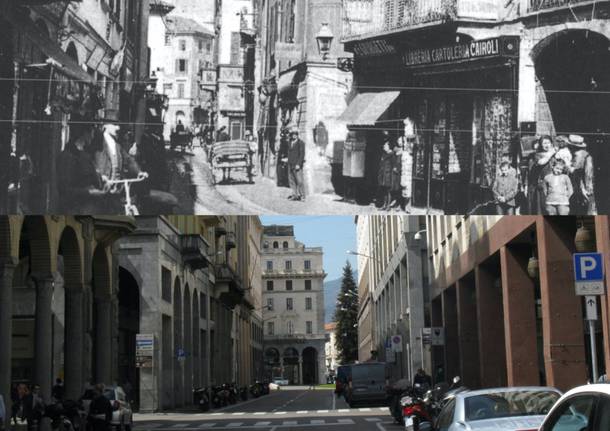
Every Monday, on a virtual walk, the column “Urban metamorphosis” talks about the transformations that the town of Varese has undergone in the last one hundred years, that is, since it became the Capital of the Province. The column is written by Fausto Bonoldi, a historic figure in Varese journalism who has covered this topic for years in the Facebook group La Varese Nascosta, and who has also written a book, published by Macchione, entitled “Cara Varese come sei cambiata” (“Dear Varese, how you’ve changed”).
READ ALL OF THE INSTALMENTS
Urban metamorphosis, sixth instalment: Once upon a time, Via Volta
Once upon a time, the old Via Volta, which was sacrificed during Italy’s Fascist period, to the reconstruction of part of the town centre, and to the wish to enlarge the central street that passes through the heart of Varese, and connects the new motorway, which was inaugurated in 1924, to the roads that lead to the valleys and to Lake Maggiore.
In the vintage photo, which has Piazza Porcari (today’s Piazza Monte Grappa) in the background, we can see the windows of the Cairoli stationers and bookshop, a cultural institution of the town that was named after Giuseppe Cairoli, who was responsible for the publication of the postcards and brochures that have left us a precious testimony of Old Varese.
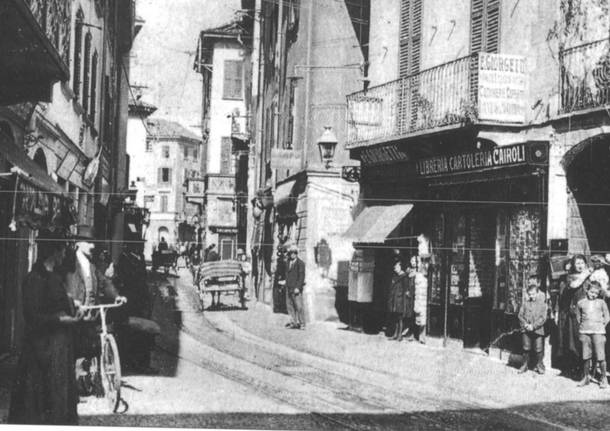
All of the buildings of nineteenth-century Via Volta were demolished in the 1930s, but whereas the left side (looking from Via Manzoni) was immediately rebuilt, from the corner with Via Bernascone (Palazzo Sommaruga, designed by the engineer Andrea Pedoja, in 1935) to the corner with the new Piazza Monte Grappa (Palazzo Castiglioni, designed by the architect Mario Loreti, in 1937), on the opposite side, the demolition work left an empty space that included Corso Roma, a real square in front of the “San Giuseppe” Church.
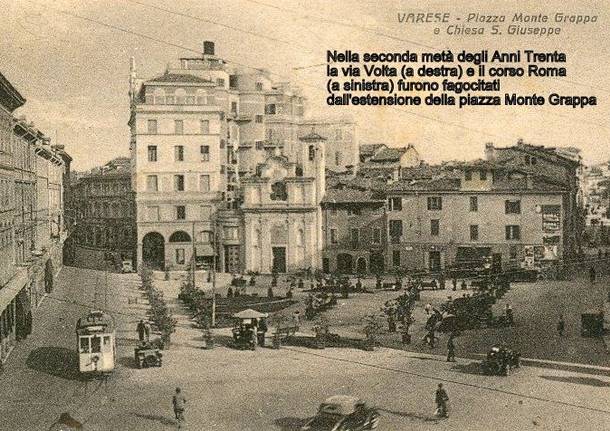
The large area created by the “restoring pickaxe” in front of the sacred building, which, unlike others, was spared by the ecclesiastical norms issued by the Habsburg Emperor Joseph II at the end of the eighteenth century, was embellished with rows of trees and flowerbeds, until the Palazzo dell’INFPS (the National Institute of Social Security, where the “F”, which was later dropped after the fall of Fascism, stands for Fascist) was built, in 1939, on the designs of the architect Mario Loreti.
Translated by Sara Mentasti and Andrea Rota
Reviewed by Prof. Rolf Cook
La community di VareseNews
Loro ne fanno già parte
Ultimi commenti
Paolo Cottini su Passa la Tre Valli Varesine: ecco cosa prevede l'ordinanza sulle scuole di Varese, tra chiusure, bus e cambi d'orario
Bustocco-71 su Arrivano le barriere antirumore in A8, lo svincolo di Gallarate chiude per dieci mesi
Felice su Dopo la sentenza sul Mottarone il racconto delle mamme di Silvia e Alessandro: “Per noi non è giustizia”
Felice su Centomila euro per la sicurezza dei giovani sulle strade: coinvolti nove istituti scolastici del Varesotto
axelzzz85 su Centomila euro per la sicurezza dei giovani sulle strade: coinvolti nove istituti scolastici del Varesotto
axelzzz85 su Centomila euro per la sicurezza dei giovani sulle strade: coinvolti nove istituti scolastici del Varesotto










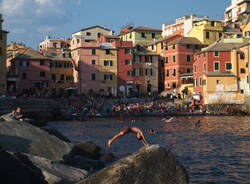
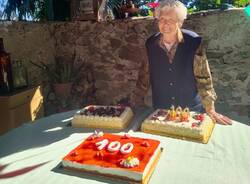




Accedi o registrati per commentare questo articolo.
L'email è richiesta ma non verrà mostrata ai visitatori. Il contenuto di questo commento esprime il pensiero dell'autore e non rappresenta la linea editoriale di VareseNews.it, che rimane autonoma e indipendente. I messaggi inclusi nei commenti non sono testi giornalistici, ma post inviati dai singoli lettori che possono essere automaticamente pubblicati senza filtro preventivo. I commenti che includano uno o più link a siti esterni verranno rimossi in automatico dal sistema.